Erik Bamberg
What comes after ChatGPT? Vector Databases - the Simple and powerful future of ML?
#1about 3 minutes
Understanding the limitations of large language models
Large language models like ChatGPT face challenges with token limits and incorporating private data, which restricts their use on large documents or custom knowledge bases.
#2about 3 minutes
Why vector databases are attracting major investment
Unlike relational or NoSQL databases, vector databases are designed to store and semantically search unstructured data, filling a critical gap in the data landscape.
#3about 4 minutes
The challenge of searching unstructured data
Manually tagging unstructured data like images and documents is inconsistent and subjective, making it an inefficient way to enable search.
#4about 5 minutes
How vector embeddings capture semantic meaning
Machine learning models convert unstructured data into numerical representations called embeddings, where semantically similar items are positioned closely in a high-dimensional space.
#5about 5 minutes
Visualizing relationships in a vector space
A demonstration with Google's Projector TensorFlow shows how words like "king" and "queen" are clustered together, visually representing their semantic proximity.
#6about 6 minutes
Performing fast similarity search with vectors
Vector databases use mathematical formulas to measure the distance between embeddings and employ indexing techniques like Approximate Nearest Neighbor (ANN) for high-speed search.
#7about 4 minutes
An overview of the vector database market
A look at popular vector databases like Pinecone, Weaviate, and Milvus, including their features, hosting models, and integrations with platforms like Hugging Face.
#8about 4 minutes
Building applications like intrusion and face detection
Vector databases can power real-world applications such as intrusion detection systems and face similarity matching without needing constant model retraining.
#9about 6 minutes
Augmenting ChatGPT with a long-term memory
The Retrieval-Augmented Generation (RAG) pattern uses a vector database to find relevant data chunks, providing LLMs with the right context to answer questions accurately.
#10about 16 minutes
Exploring more applications for vector search
Vector search enables a wide range of applications including recommendation systems, document deduplication, time-series analysis, and advanced product search.
Related jobs
Jobs that call for the skills explored in this talk.
Matching moments
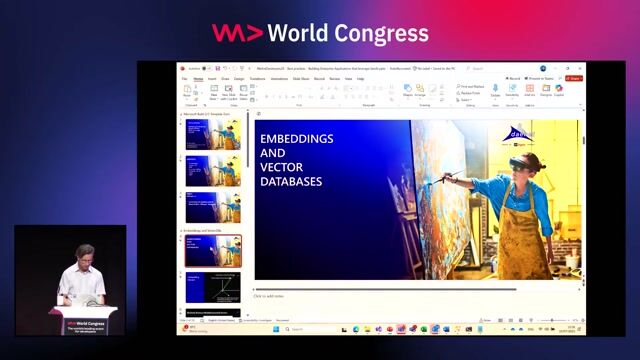
08:40 MIN
Understanding the role of embeddings and vector databases
Best practices: Building Enterprise Applications that leverage GenAI

23:43 MIN
Key takeaways for building enterprise GenAI applications
Best practices: Building Enterprise Applications that leverage GenAI
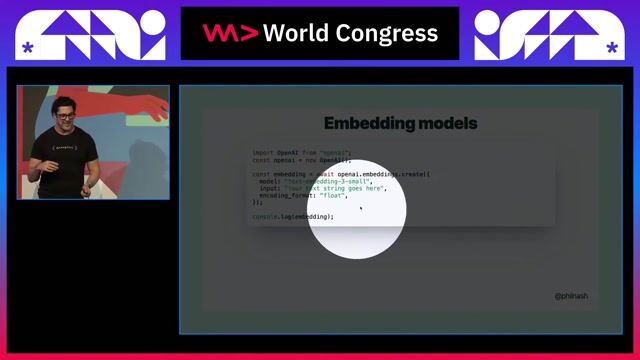
22:14 MIN
Using professional embedding models and vector databases
Build RAG from Scratch
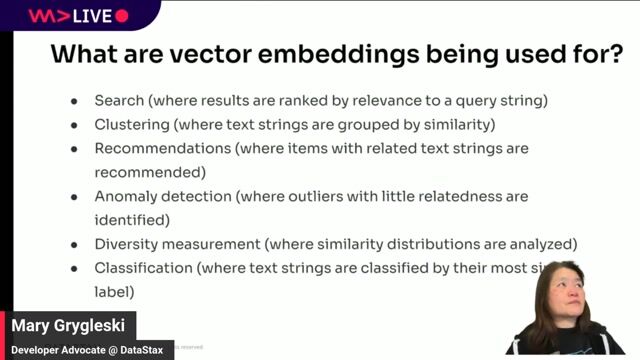
43:14 MIN
Practical use cases for vector embeddings
Enter the Brave New World of GenAI with Vector Search
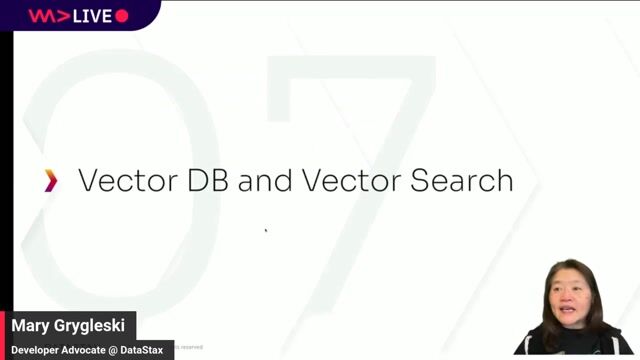
34:15 MIN
How vector databases enable similarity search
Enter the Brave New World of GenAI with Vector Search

09:42 MIN
How to choose the right tools for your AI application
Building AI Applications with LangChain and Node.js
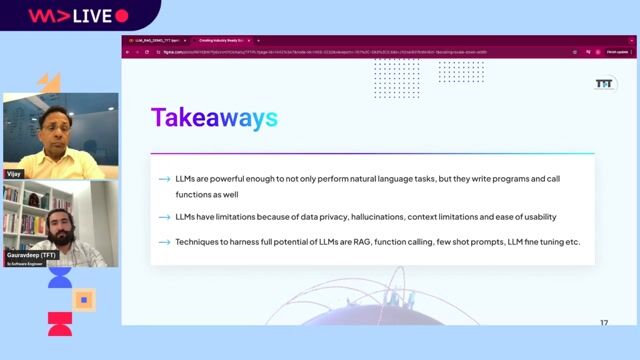
39:05 MIN
Code walkthrough for building a RAG-based chatbot
Creating Industry ready solutions with LLM Models
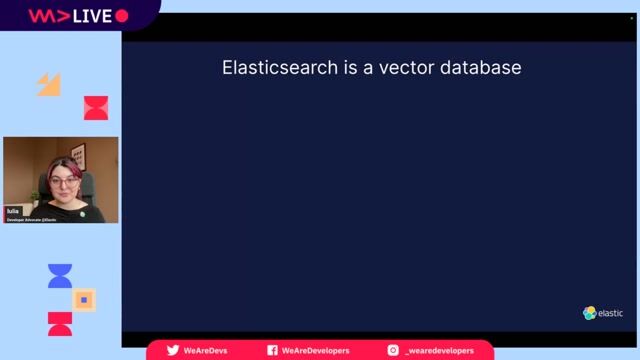
15:33 MIN
Using Elasticsearch as a vector database for search
Harry Potter and the Elastic Semantic Search
Featured Partners
Related Videos
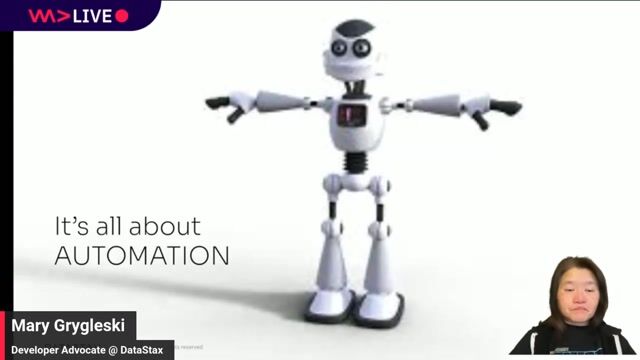 1:00:56
1:00:56Enter the Brave New World of GenAI with Vector Search
Mary Grygleski
 1:05:44
1:05:44WeAreDevelopers LIVE - Vector Similarity Search Patterns for Efficiency and more
Chris Heilmann, Daniel Cranney, Raphael De Lio & Developer Advocate at Redis
 34:34
34:34Vision for Websites: Training Your Frontend to See
Daniel Madalitso Phiri
 56:46
56:46A beginner’s guide to modern natural language processing
Jodie Burchell
 57:52
57:52Develop AI-powered Applications with OpenAI Embeddings and Azure Search
Rainer Stropek
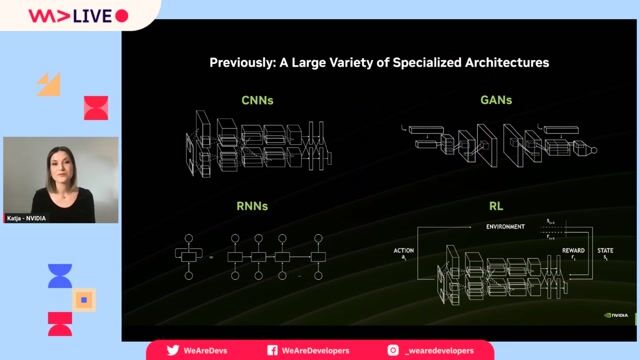 56:55
56:55Multimodal Generative AI Demystified
Ekaterina Sirazitdinova
 53:46
53:46WeAreDevelopers LIVE – AI vs the Web & AI in Browsers
Chris Heilmann, Daniel Cranney & Raymond Camden
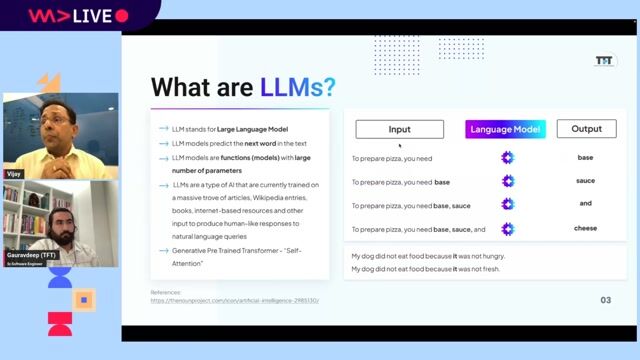 58:00
58:00Creating Industry ready solutions with LLM Models
Vijay Krishan Gupta & Gauravdeep Singh Lotey
From learning to earning
Jobs that call for the skills explored in this talk.








Machine Learning Algorithm/SW Optimization Engineer
Leuven MindGate
Python
PyTorch
TensorFlow
Machine Learning
